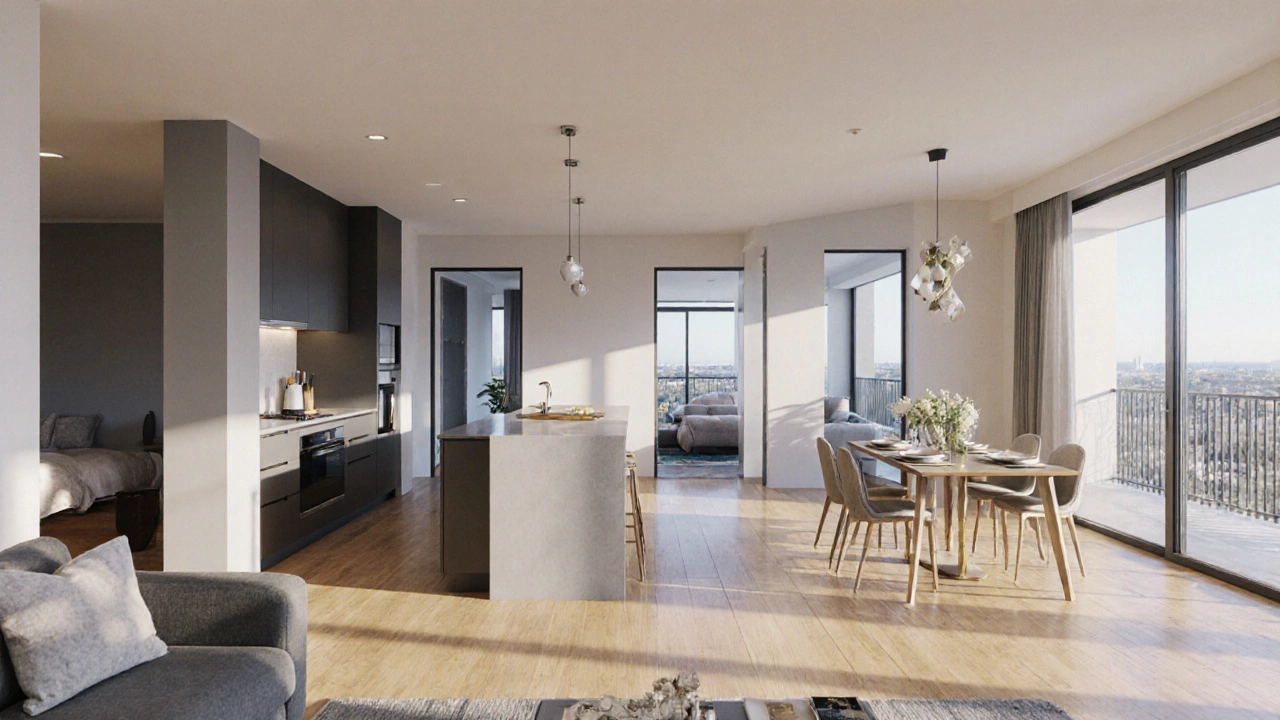Understanding Property Types: Apartments, Townhouses, Villas and More
When talking about property types, the categories of real‑estate that define how a building is used and owned. Also known as real estate categories, they shape buying, renting, and investing decisions.
One of the most common property types is the apartment, a self‑contained living unit usually found in a multi‑family block. Apartments vary by size, layout and amenities. A 400 sq ft studio packs a bed, a kitchenette and clever storage hacks, while a 600 sq ft unit adds a separate bedroom and a modest living area. Knowing the square‑footage range helps you budget for rent or purchase price, estimate utility costs, and decide whether the space meets your lifestyle. The apartment market also drives rental‑price trends in big cities, so tracking these numbers informs both tenants and investors.
Another key category is the townhouse, a row‑style home that shares walls with neighboring units but often includes its own land parcel. Townhouses sit at the crossroads of house ownership and condominium living. You’ll encounter private areas (like the front yard), common areas managed by an owners’ corporation, and sometimes stated areas that belong to the corporation but are used privately. Understanding who owns the land around a townhouse can prevent legal headaches and hidden fees. The ownership model also influences financing options and insurance needs, making it essential knowledge for anyone buying or renting a townhouse.
Luxury‑focused buyers often look at the villa, a detached, high‑end residence that offers extensive space and premium finishes. Modern villa construction costs have risen sharply, with 2025 estimates showing a base price of ₹30,000 per square foot in top Indian markets, plus additional expenses for smart‑home tech and eco‑friendly materials. Villas typically sit on larger plots, giving owners flexibility for landscaping, pools, and expansions. Knowing the cost breakdown—foundation, structure, finishes, permits—helps investors decide whether a villa fits their portfolio or if a smaller property type offers better returns.
Finally, the rental property, any real‑estate asset that generates income through leasing to tenants is a distinct type because it brings management responsibilities into play. Landlords must navigate security‑deposit rules, eviction procedures, and routine maintenance, all of which differ by state. Self‑managing a rental in Virginia, for example, costs less in fees but demands more time for tenant screening and day‑to‑day tasks. Understanding the specific obligations tied to a rental property helps you weigh the benefits of hiring a management company versus handling it yourself.
Why Knowing Property Types Matters for Your Decision
Property types encompass apartments, townhouses, villas, and rental properties, each with its own set of rules, costs, and market dynamics. Investment decisions are influenced by the type you choose—whether you chase the 5 % rule, explore rent‑to‑own deals, or aim for short‑term homestay profits. For example, the 5 % rule helps compare the true cost of renting versus buying a specific type, while rent‑to‑own arrangements often turn a townhouse into a pricey temporary lease. By grasping the nuances of each type, you can match your budget, lifestyle, and long‑term goals to the right real‑estate option.
Below you’ll find a curated collection of articles that dive deeper into each property type, covering everything from land ownership in townhouses to modern villa construction costs, from apartment layouts to rental‑law updates. Browse the list to pick up actionable tips, spot hidden fees, and get a clear picture of which property type aligns with your plans.
Understanding 3SLDK Apartments: Definition, Layout & Buying Guide
by Arjun Mehta Oct 11 2025 0 ApartmentsDiscover what a 3SLDK apartment is, its layout, benefits, market trends, and a buyer's checklist for Melbourne properties.
READ MORE